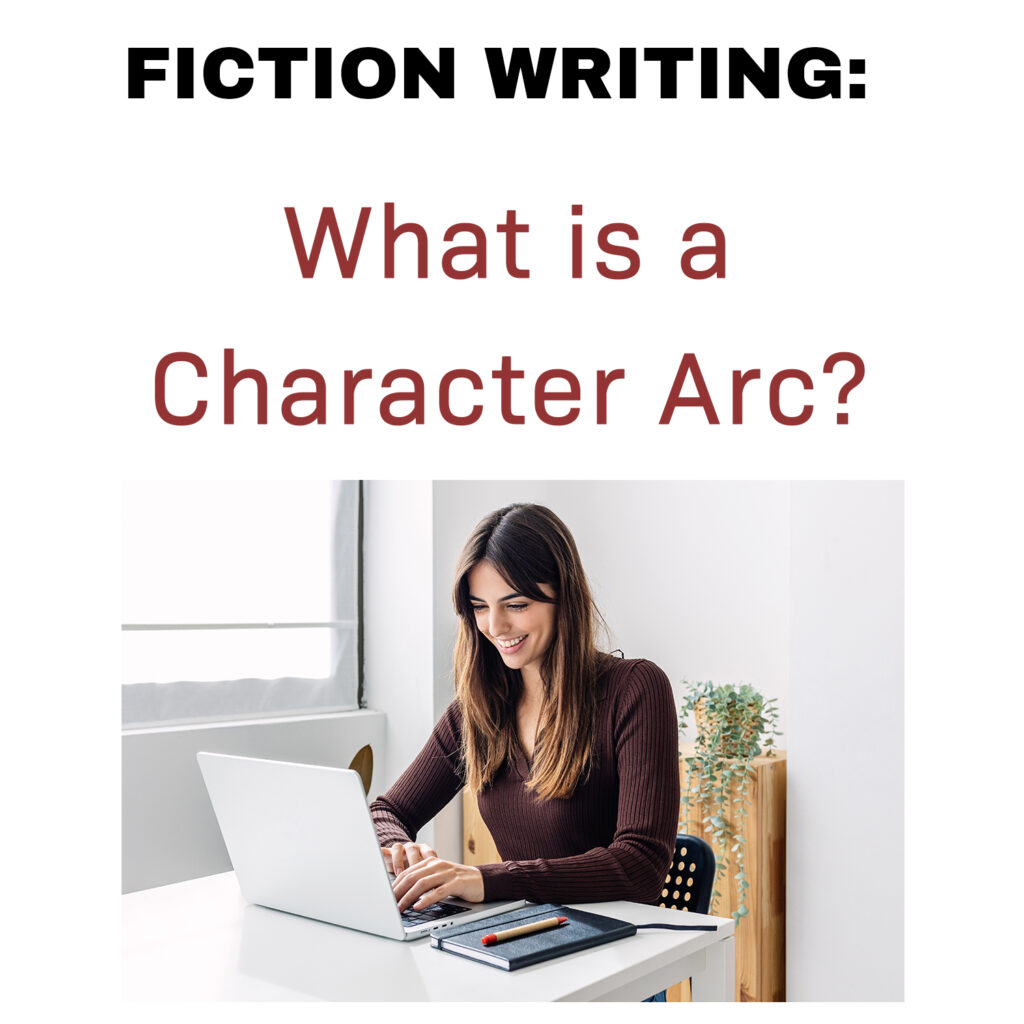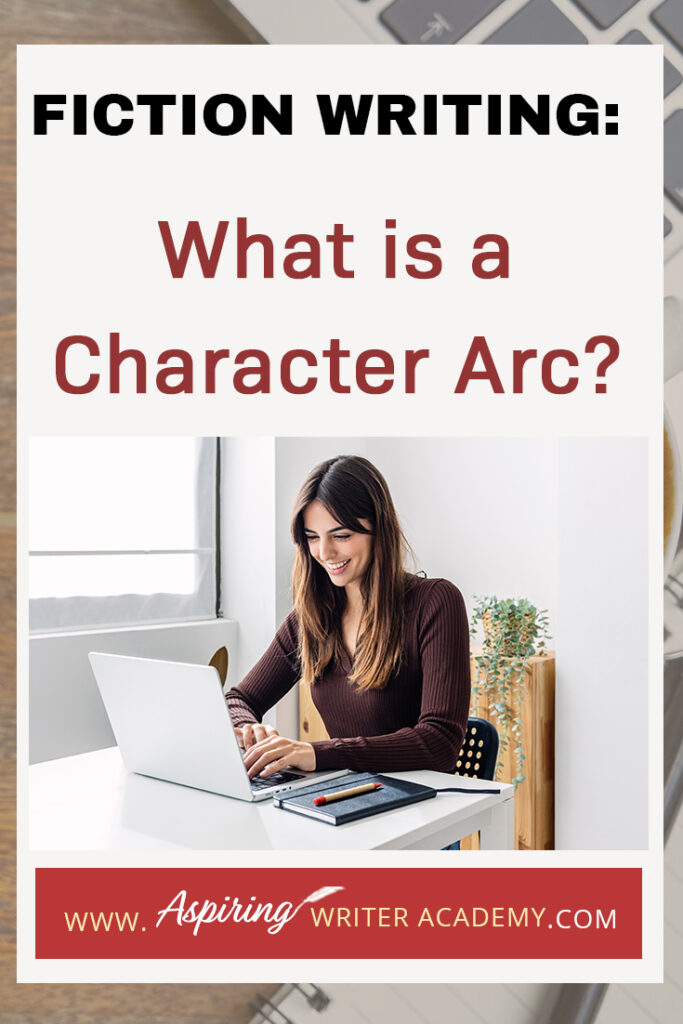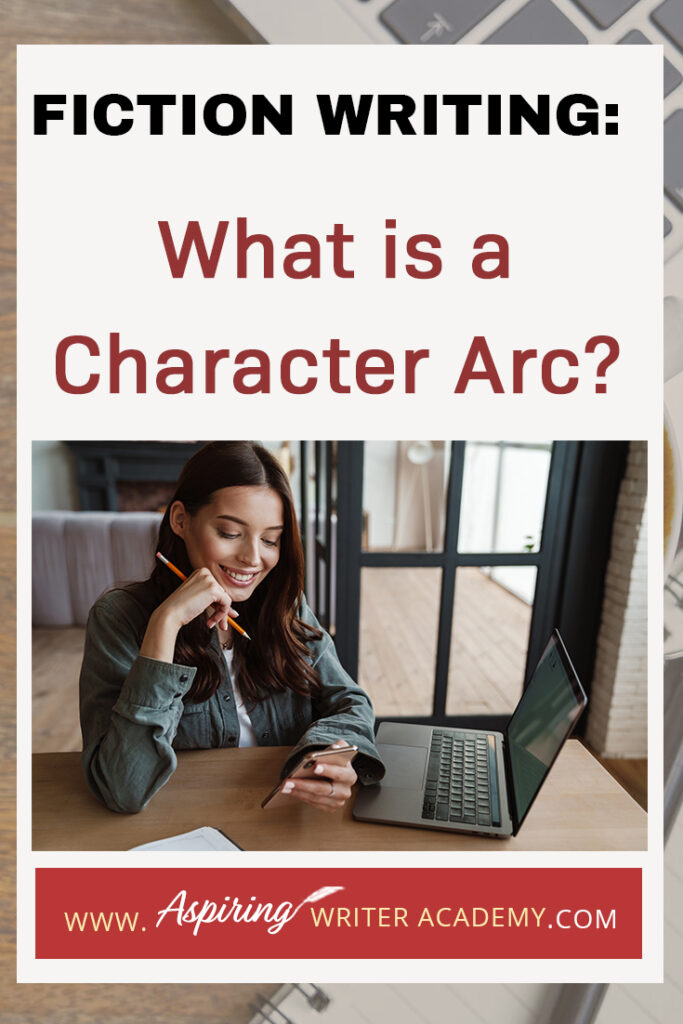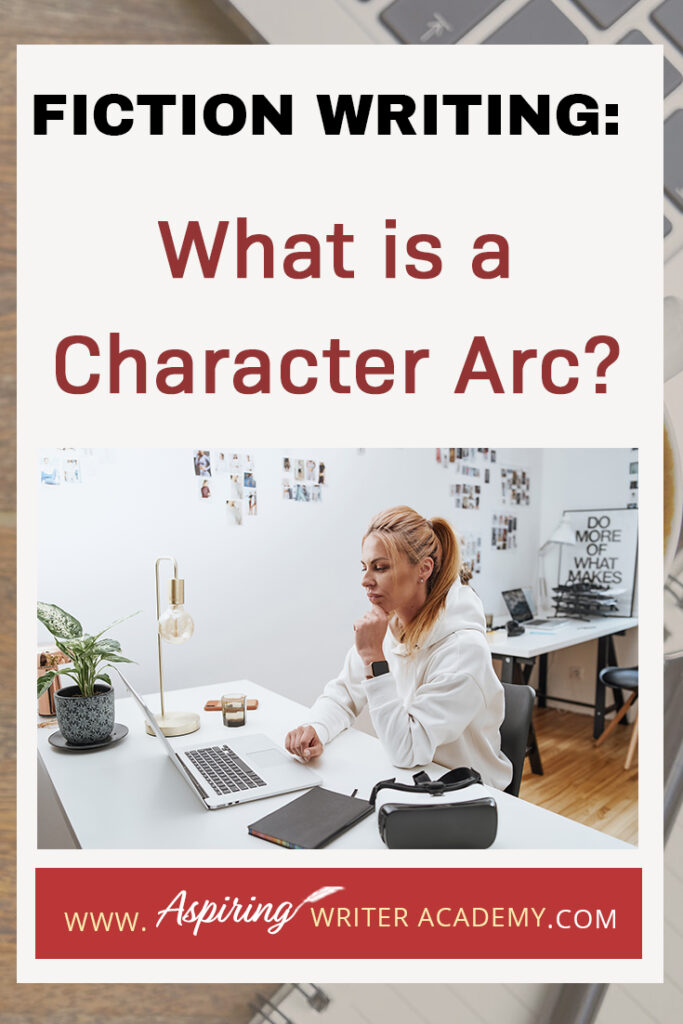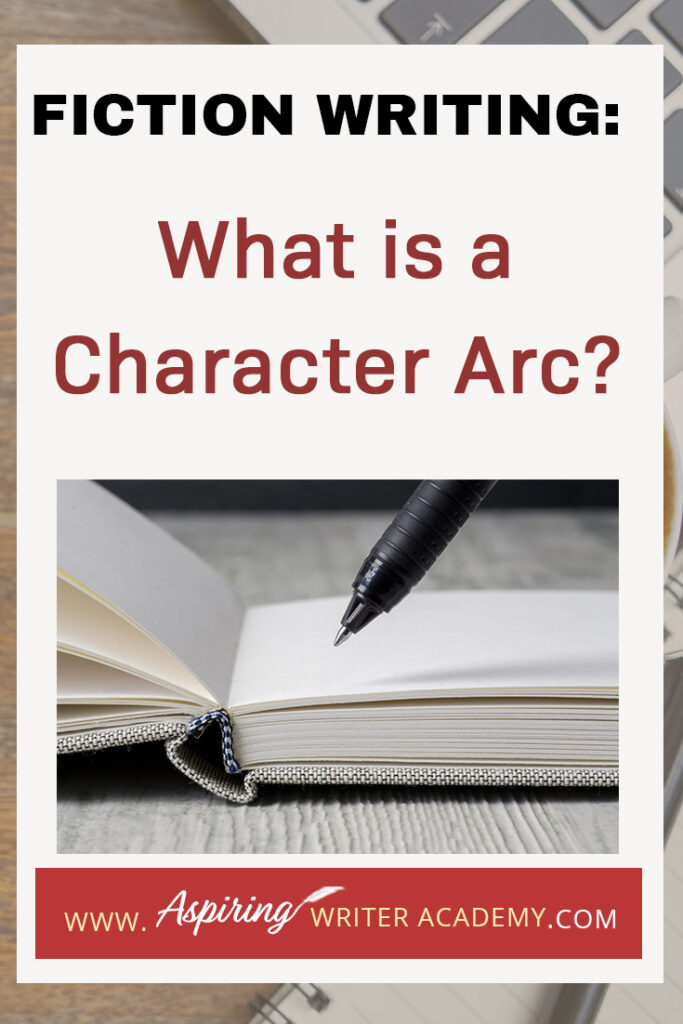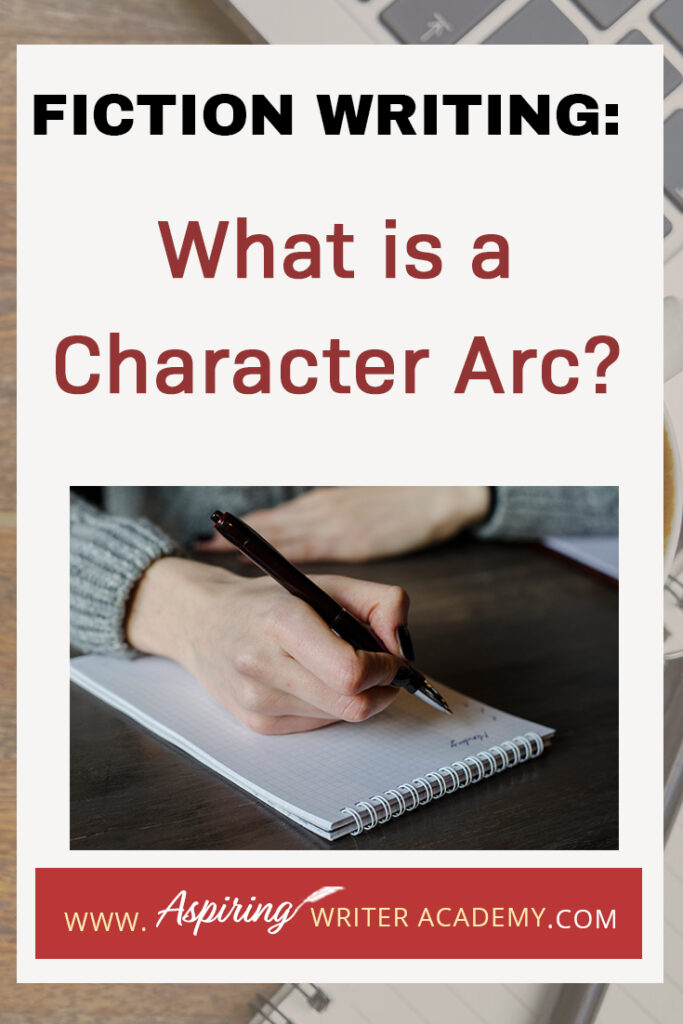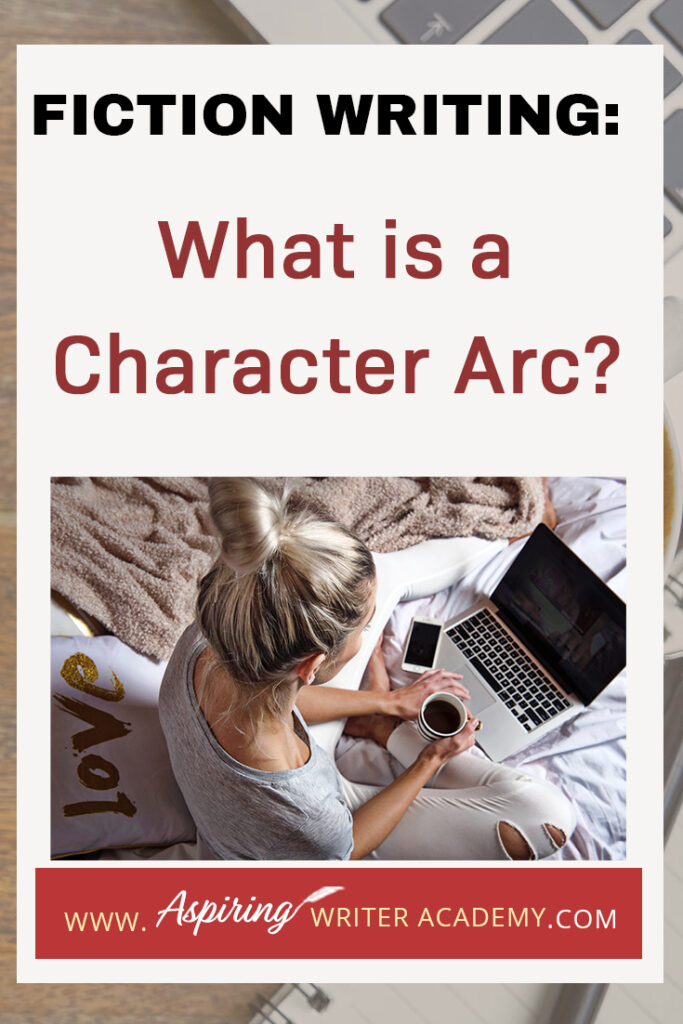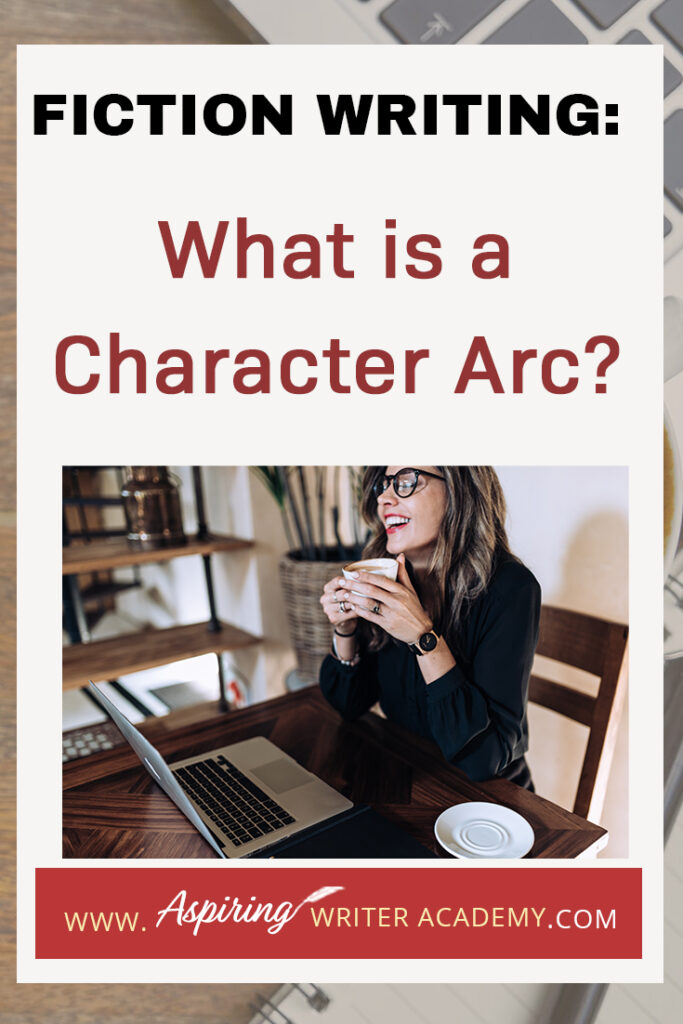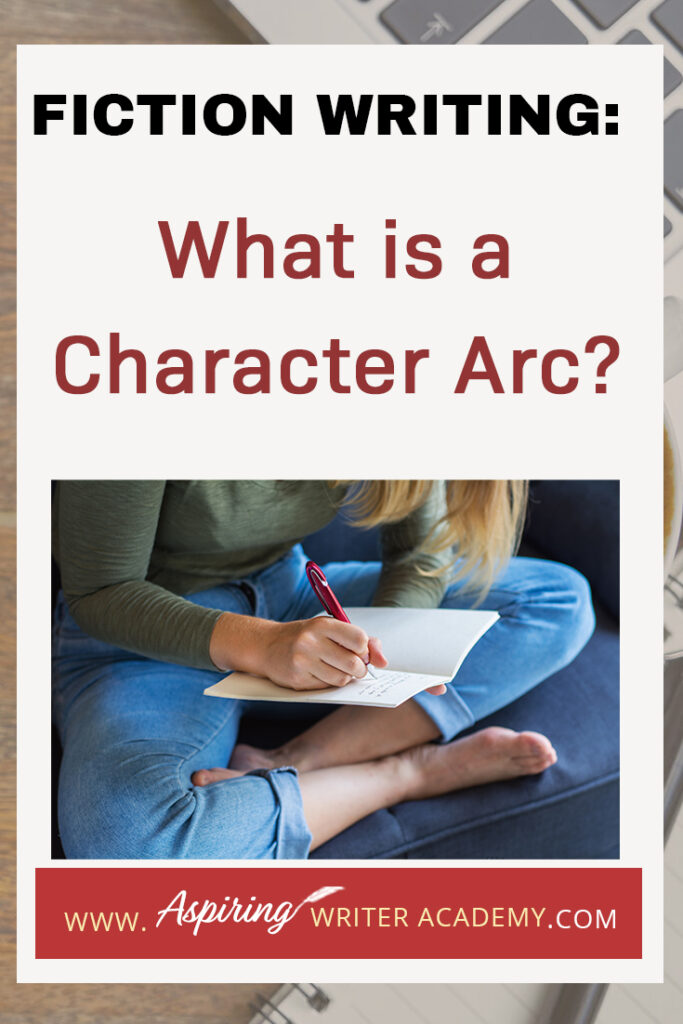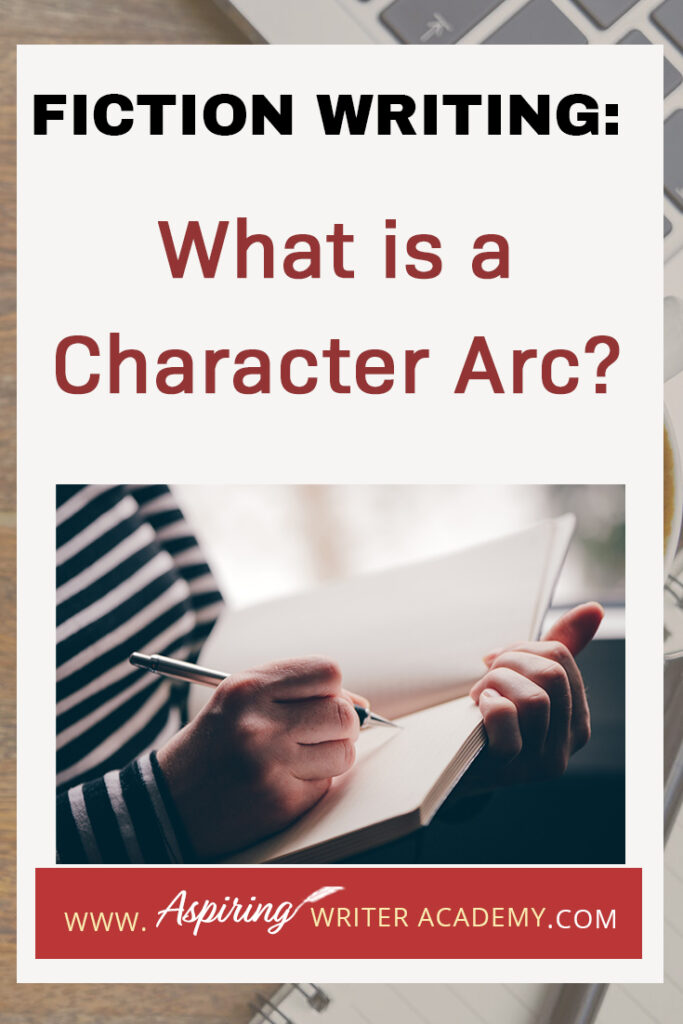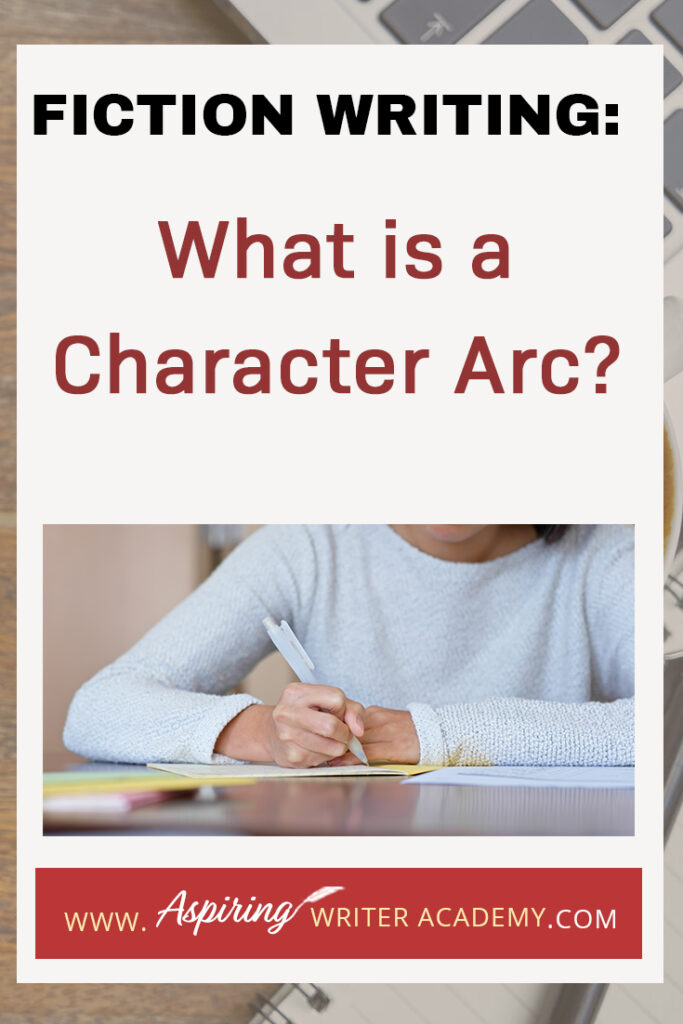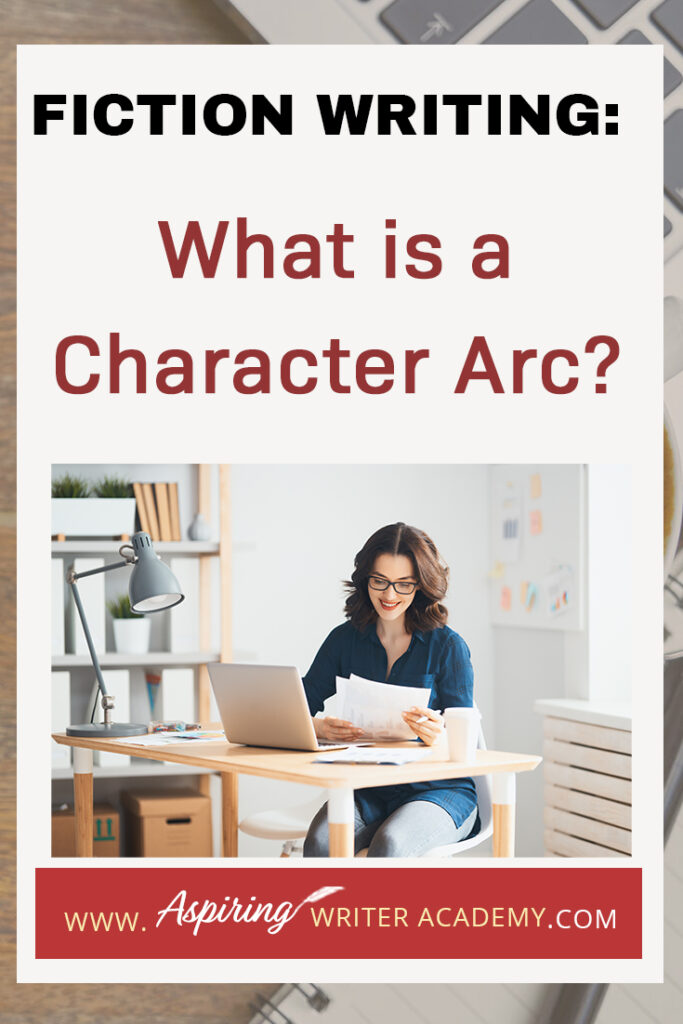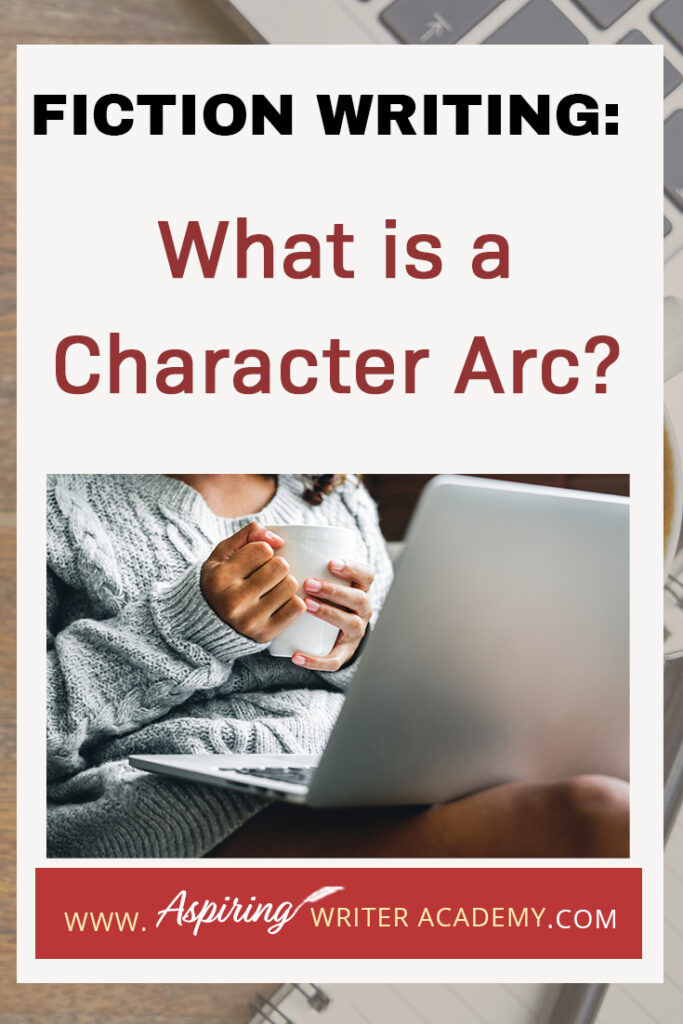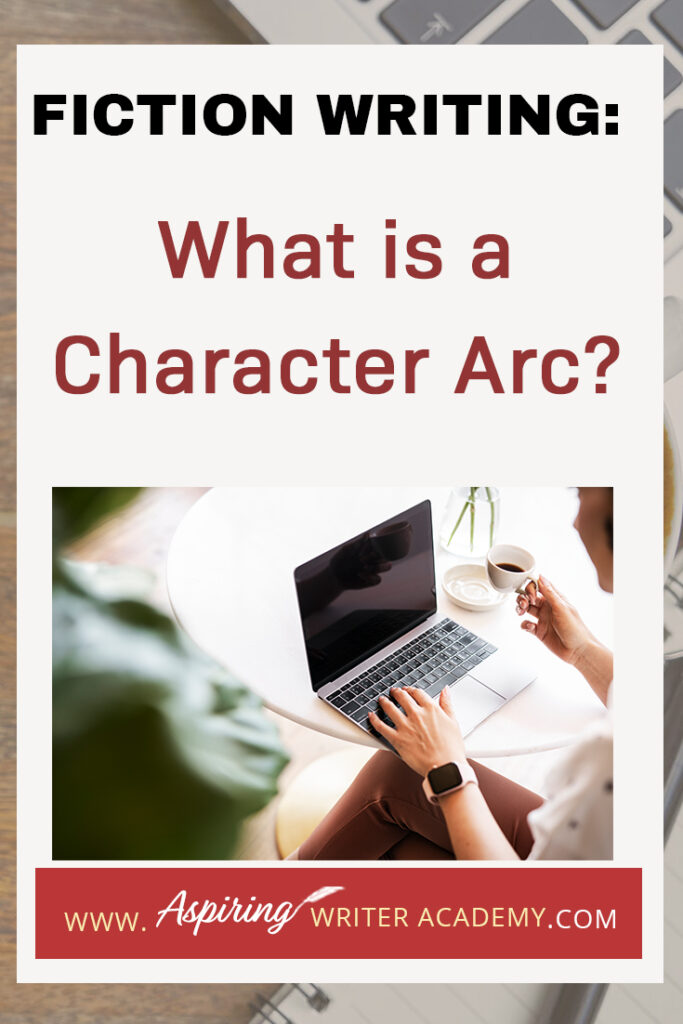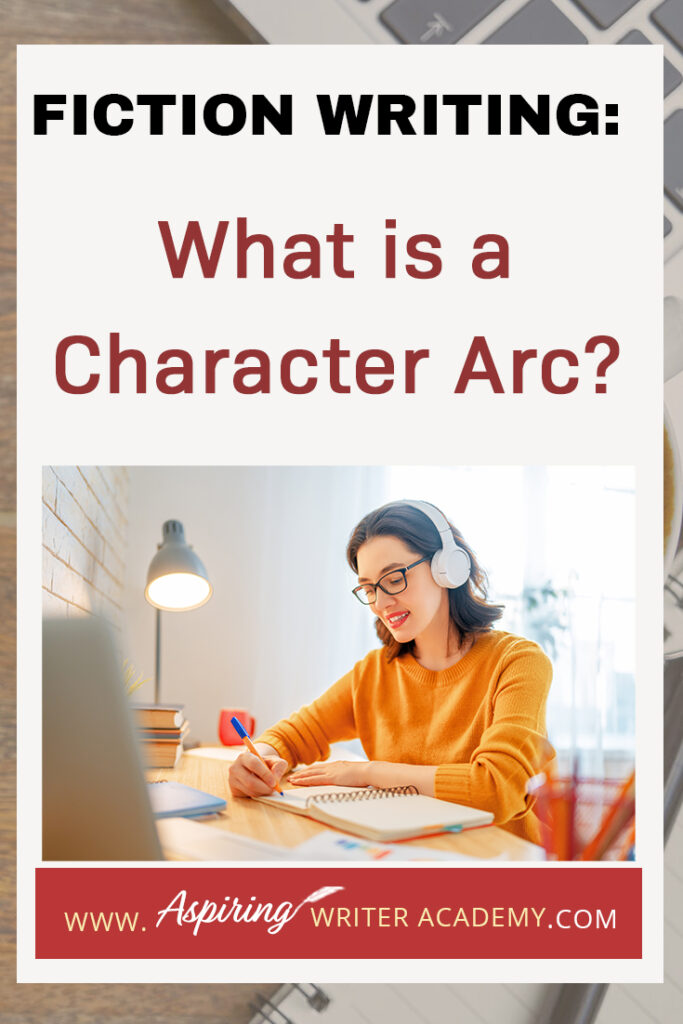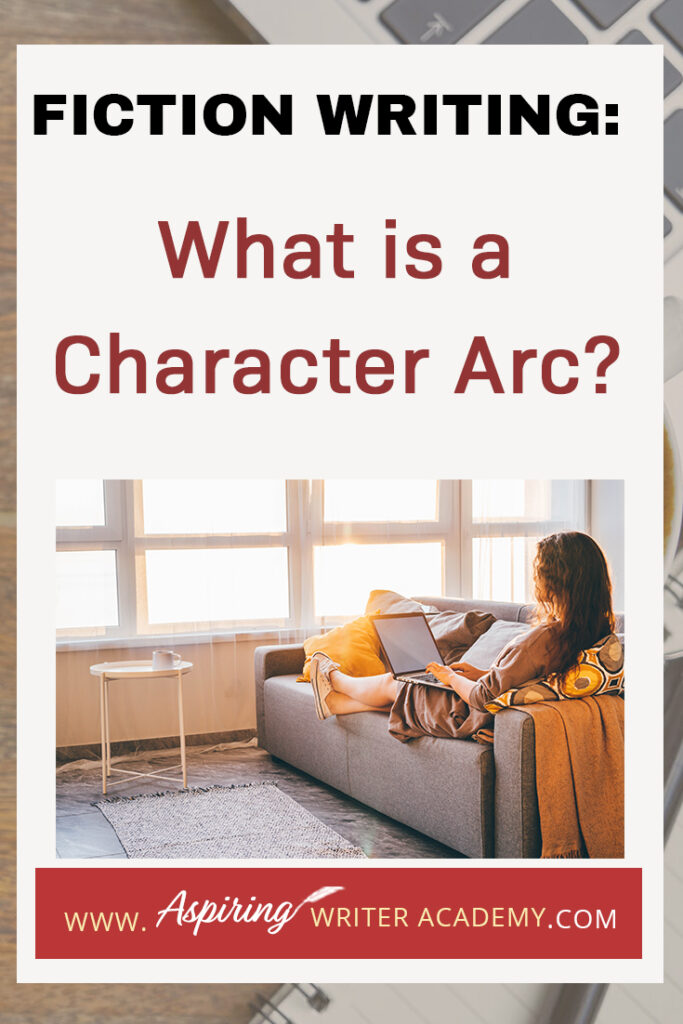Fiction Writing: What is a Character Arc?
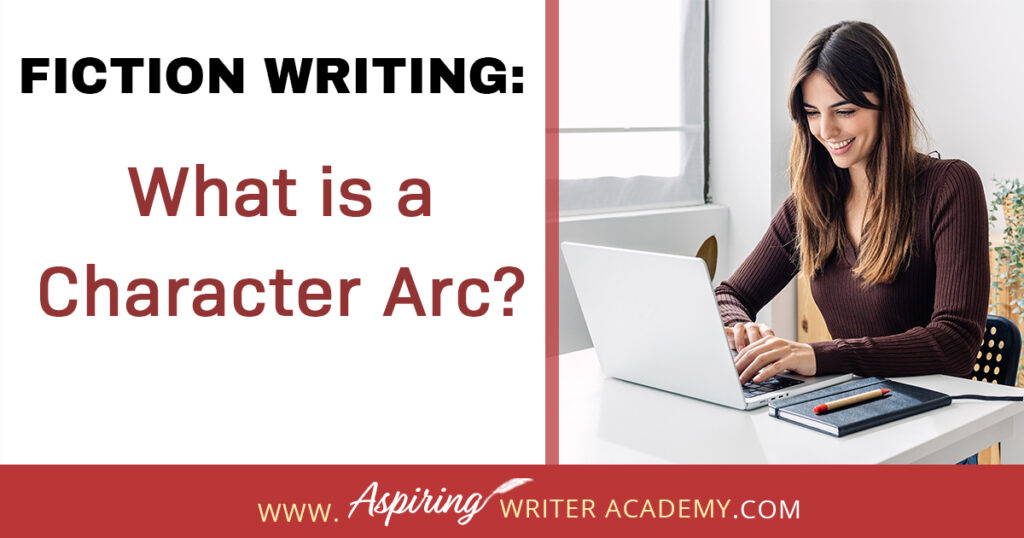
In the best stories, the protagonist (main character) undergoes change as he or she struggles to meet challenges, resolve conflict, and achieve the story goal. The character may overcome a weakness or have a change of heart or point of view, but he is not the same person at the end of the story as he was at the beginning. The story-journey changes him.
In our post Fiction Writing: What is a Character Arc? we help you create character change that is both incremental and believable.
When I first started writing fiction, I was trying my best to create characters and an interesting, believable plot. I did not know anything about character arcs or the meaning of a half dozen other ‘writer terms’ thrown around at writer’s conferences. It was hard enough just to write a good story.
What makes a story “good?”
It is not enough to just have a fascinating ‘external’ sequence of events. A good story must also have an ‘internal’ sequence of shifts within the character’s heart and head that affect his thoughts, emotions, logic, viewpoints, beliefs, habits, or personality. A good story is about character transformation.
Why?
Because this makes the story more meaningful.
Think about some of the movies you might have seen. Some are entirely plot driven, focusing on an external framework of high-action scenes with jaw-dropping visual effects. These stories can include a lot of car chases, explosions, world-wide disasters, running from monsters, alien or machine-like threats bent on destroying everything in sight with their superior technology. But do we really know or care about the characters? Not really.
These movies might be worth seeing once, but the most gripping stories, the ones that stay in our hearts and minds long after the story is over, sometimes even years, are the stories that contain a character-driven storyline as well. A story where the external events help to create change in the character that is emotionally satisfying and perhaps even profound.
The protagonist’s character change gives meaning to the story that may even work to change sub-characters and the heart or mind of the reader or viewer. The story has meaning because we care about the character and what he has gone through. We understand the struggles and desires in his heart and head and we care about what happens to him. The reader or viewer becomes hopeful that if this character can overcome such challenges, then maybe they can too.
Fiction Writing: What is a Character Arc?
A Character Arc is the transformation (or incremental change) that occurs inside a fictional character, taking him from who he is at the beginning of the story to who he is at the end.
Let’s take a look at your work-in-progress.
- Who is your protagonist at the beginning of the story?
When brainstorming, it might help to first consider where you want your protagonist to end up. What kind of person will he or she be at the close of your fictional novel?
Now what is the opposite of that? To create character change, the protagonist will need to grow. So, you will have to decide what weakness or personal flaw or emotional hang-up the character will need to struggle to overcome in order to end up ‘a changed person’ at the end of the story. The character doesn’t have to be completely transformed, but he or she should have grown into a better version of themselves. A better and improved edition of who he or she was before they went on this story journey.
The character at the beginning of the story———————————The character at the end of the story.
Who is your character before he goes on the story journey?
- What happens in the story to change your protagonist?
The first big game changer that throws your character off-balance is the Inciting Incident. The antagonist or villain creates opposition that the protagonist must overcome. If the protagonist has a specific goal, the antagonist/villain is going to oppose or block the achievement of that goal.
The protagonist will need to decide how to overcome this opposition and then creates a game-plan. This game-plan will take the protagonist out of his comfort zone and force him into situations he or she has never dealt with before. As the protagonist takes each step forward, he encounters more obstacles, problems, and conflicts that will challenge his previous values and beliefs.
He or she may incrementally find their views shifting, changing, evolving as a result of this testing. The character finds he must overcome his initial flaws or weaknesses in order to succeed. This process takes time. The protagonist will encounter many failures before he encounters some wins.
Just when the protagonist thinks he is on the verge of overcoming the opposition and achieving his goal, the antagonist/villain will do something at the Mid-point of your novel to turn the protagonist’s world upside down again. This is the second game-changer. The protagonist will need to re-adjust and learn the skills, habits, or adaptation needed to move forward once again.
Finally, about three-quarters of the way through the story, at the Black Moment, the antagonist/villain surprises the protagonist with a third game-changer, another turning point. This is a crisis that makes the protagonist really question himself and realize important truths about the type of person he has become and who he needs to be.
Who are the people who come into the protagonist’s life to help show the protagonist the answers and help him to change?
Which events or circumstances can challenge or change your character the most?
To make your story believable, the protagonist will not have a sudden euphoric revelation which changes his character all at once. Throughout the entire body of the story, the people, places, and events should all serve to create incremental character change within the protagonist. Think of an odometer or a clock with the different points that stick out along the arc.
At the end of each scene and each chapter, the protagonist should gain a little more insight, have his heart and mind changed a few degrees more. Have your character question his values and beliefs, his strengths and weaknesses, his skills and inadequacies.
What can prompt the protagonist’s need to change for the better? What can you insert into your scenes to trigger these incremental changes?
- Who is your protagonist at the end of the story? How has he or she changed?
You must also ask yourself, how much has this character changed? Is the protagonist a completely changed person, the opposite of how he or she was at the beginning of the story? Or is the protagonist a better person to some degree? Or has he or she managed to just finally take one step forward?
At the end of the 1990 movie, “Pretty Woman,” starring Julia Roberts and Richard Gere, the Edward Lewis character, who feels he is incapable of commitment, has a change of heart and goes after his love interest Vivian, willing to overcome his fear of heights to reach her. Although he would probably propose if he had to at this point, Vivian realizes what a huge step forward it is for Edward to admit his feelings and she makes it easy for him. She decides that for now, love is enough, and they kiss.
The end is satisfying because the audience also understands the internal struggle Edward went through to get to this point. If it had been easy, the audience would have expected more. At the end of a romance, the reader expects a happily-ever-after, and with this movie, the audience is left with the hope that Edward will continue to evolve and in the future the couple will marry. Many romances do end with a proposal of marriage or at least a commitment between the romantic couple.
Watch Pretty Woman on Amazon Click Here
What if you are writing women’s fiction, or a mystery, an action-adventure, a quest novel, thriller, or suspense? Or a historical, fantasy, dystopian, or science fiction novel? How did your protagonist evolve? How did the challenges and opposition encountered during the middle of the story prepare the protagonist for the Climax, the face-to-face confrontation with the antagonist or villain? How did the events of the story create change within the character?
The bigger the character arc from beginning to end, the more intense your story will be.
Can the protagonist do something at the end of the story that he or she couldn’t do at the beginning because he has changed? How will this character change offer hope to the other characters in the story going forward? How will this transformation offer hope to your reader?
CHARACTER ARC RECAP:
Your protagonist at the beginning of the story: what is his or her flaw or weakness that must be overcome? __________________________________________________________________________
The events of the story cause the protagonist to transform, change, or grow in this way:_________________________________________________________________________
Your protagonist at the end of the story: how does he or she change? What is the character now capable of doing? Now he or she can (do what?) ______________________________________________________________________________
We hope you have enjoyed Fiction Writing: What is a Character Arc? and you have gained some insight into how to create incremental change within the protagonist of your fictional novel which will, in turn, make your story more meaningful!
If you have any questions or would like to leave a comment below, we would love to hear from you!
You may also want to download our free Brainstorming Your Story Idea Worksheet with fill-in-the-blank templates to help you further develop your characters and deepen your story.
Do you find it difficult to create compelling antagonists and villains for your stories? Do your villains feel cartoonish and unbelievable? Do they lack motivation or a specific game plan? Discover the secrets to crafting villains that will stick with your readers long after they finish your story, with our How to Create Antagonists & Villains Workbook.
This 32-page instructional workbook is packed with valuable fill-in-the-blank templates and practical advice to help you create memorable and effective antagonists and villains. Whether you're a seasoned writer or just starting out, this workbook will take your writing to the next level.
Our Goal for Aspiring Writer Academy is to help people learn how to write quality fiction, teach them to publish and promote their work, and to give them the necessary tools to pursue a writing career.

ENTER YOUR EMAIL BELOW
TO GET YOUR FREE
"Brainstorming Your Story Idea Worksheet"
7 easy fill-in-the-blank pages,
+ 2 bonus pages filled with additional story examples.
A valuable tool to develop story plots again and again.
Other Blog Posts You May Like
How to Create Antagonists Who Are Not Villains
How to Create the Protagonist for Your Fictional Story
How to Choose Characters to Populate Your Fictional Story
Fiction Writing: How to Plot a Story where the Antagonist is an ‘Invisible Foe’
Creative Writing: 5 Ways to Strengthen a Weak Fictional Character
Fiction Writing: How to Write Compelling Dialogue
5 Questions to Create Believable Villains
Why Your Characters Need Story-Worthy Goals

is a multi-published author, speaker, and writing coach. She writes sweet contemporary, inspirational, and historical romance and loves teaching aspiring writers how to write quality fiction. Read her inspiring story of how she published her first book and launched a successful writing career.

